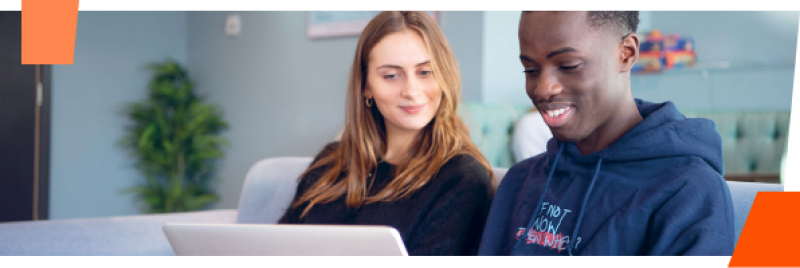The KIPs were created by Student Support and Wellbeing in conjunction with the Directorate of Education. They were agreed by the University’s Education and Student Experience Board, and they have been sponsored by the Deputy Vice Chancellor (Education and Student Experience).
The KIPs complement the Equality, Diversity and Inclusivity Strategy and Digital Accessibility Policy, and were designed to comply with relevant legislation such as the Equality Act (2010), Public Sector Bodies Accessibility Regulations (2018), British Sign Language Act (2022) and European Accessibility Act (2025).
Line managers, team leaders, and divisional heads are expected to ensure that they are shared with all staff so that they can be embedded in practice across the University. It is recommended that KIPs form part of all staff inductions and that local teaching and content creation practice guidance makes reference to them.
This guide is designed to highlight the requirements of all staff to embed accessible practices and to provide practical guidance and tools to enable this. These inclusive practices are a simple but powerful way to make your teaching/support delivery more inclusive, because:
- They anticipate the needs of our learners and users
- They reduce the need for retrospective adjustments
- They benefit all students, not just those with disabilities
Why are KIPs mandatory?
- To improve the learning experience for all students
- To reduce the need for retrospective adjustments
- To lessen the reliance on ILPs
- To ensure parity of provision and approach
- It's a legal requirement: the Public Sector Bodies (Websites and Mobile Applications) Accessibility Regulations (2018) state our digital content needs to meet the Web Content Accessibility Guidelines (WCAG) 2.2 AA standard
- KIPs reinforce the measures for inclusive module design in the Code of Practice for Quality Assurance: ANNEX B: Approval and Withdrawal of Modules (Appendix A).
Our Kent Inclusive Practices:
- Offer digital learning resources
- Share content in advance
- Make your content easy to navigate and understand
- Make multimedia accessible
- Make assessments accessible
They're explained in more detail below.
1. Offer digital learning resources
Library/academic resources
Choose digital resources over print when creating reading lists and recommending academic resources. If it is not possible to offer a digital version, contact the Accessible Information team as soon as possible, to ensure an accessible copy can be made available.
Why: e-resources can quickly and easily be converted into more accessible formats using software such as SensusAccess. In contrast, print material needs more work to make it accessible and can take days or sometimes weeks to convert.
Moodle
Make sure your Moodle module is up to date and that information is clearly structured and easily found. If you are unsure about the accessibility of your module, contact the E-Learning team.
Why: students get vital information about the course from Moodle so it needs to be clearly structured and up to date to ensure they can easily access what they need.
Record lectures and the lecture components of lecture-seminars
Use lecture capture and make sure your videos are accessible. Automated captioning is enabled by default in all KentPlayer recordings. Make sure that you save your recordings in the correct module folder so that they are automatically uploaded to the Moodle module for students to access. This applies to both undergraduate and postgraduate lecture-style teaching.
Why: this helps with notetaking and revision, especially for students with ILPs. It is also vital for those who have to miss lectures due to a long term health condition or disability.
2. Share content in advance
Reading lists
Share reading lists on the Library’s TALIS system at least 4 weeks in advance. Clearly show the importance of readings using the Library’s criteria; core (must read), recommended (should read) and background (could read). Be mindful of how many resources you are requiring/suggesting students read.
Why: it helps those with reading difficulties to prioritise, supports slower readers and allows time to make alternative formats if needed. It also ensures that the Library can check stock and the availability of digital copies, and notify the Accessible Information team if any manual accessible versions need to be created.
Module outlines and lecture/seminar slides
Share digital versions of outlines and slides in a timely way:
- module outlines: 4 weeks before the module starts
- lecture/seminar slides: at least 24 hours before the session
Why: this particularly helps part-time, distance and commuting students and students with notetaking difficulties. It also helps students and those supporting them prepare for each session, which is especially important if they are neurodivergent, use British Sign Language, or have comprehension or focus issues.
3. Make content easy to navigate
- Give your documents, presentations and other media a clear structure and easy navigation. Make documents and presentations (including images and other media) accessible
- Use plain English
- Check the accessibility of your outputs
- Make emails clear and easy to understand, with action points or links to further information to prevent overload
- Use glossaries of specialist/technical terms
Why: so that they are easy to read and can be understood by screen readers and other assistive technologies, and to support comprehension. Glossaries are particularly helpful for international users or for British Sign Language interpreters.
4. Make multimedia accessible
Give text alternatives for the key teaching points in images, tables, graphics, videos and audio.
- Images and tables: this can be a short explanatory caption to ensure key information is accessible
- Video or audio: include a transcript. How to make accessible video. Automated captions are on by default for KentPlayer recordings
- Social media: include a caption(s) for any images/video used and capitalise each word on hashtags to make them screen-reader friendly
Why: a text version, with searchable terms and correct spelling of complex names, is essential for students with visual impairments, deafness or hearing loss. It's also useful to reinforce the learning for everyone.
5. Make assignments accessible
Vary assessment methods and make them appropriate to learning outcomes. Make sure your methods of evaluation don't negatively impact students with disabilities.
When writing module specification documents, consider the different assessment types most frequently requested in the past and the rationales for using them.
Extra time
Some students need extra time arrangements. Do the number, length and timing of assessments take this into account, such as time given for laboratory practical assessments or written tests? Have you checked if any students in your class have an ILP that includes extra time for in-class assessments and factored this into arrangements?
Spelling, punctuation and grammar
Are spelling, punctuation, and grammar an appropriate part of the assessment criteria?
- If these are critical to the learning outcome this must be clearly stated in advance in the module specification
- If not, make sure that your marking schemes allow exclusion of these criteria where this is needed as a reasonable adjustment for students with specific learning difficulties
Why: to make sure you are assessing the student's knowledge, skill and understanding, not their disability.
Tools and guidance
Making your content accessible
The University Guide has a number of tips and resources to help you embed more accessible practices into your teaching and content. There are also links to resources and advice on the Accessibility webpage. The Accessible Information team in Student Support and Wellbeing provide training for colleagues on accessible practices.
Alternative formats
Users can download some alternative formats of readings and resources directly from Moodle using a plug-in called Ally, by clicking on the A↓ icon next to the material they want. You can also convert materials using websites like SensusAccess.
British Sign Language (BSL)
Students who use British Sign Language (BSL) as their first language can get interpreters for teaching sessions and can also have specific core learning materials translated into BSL. The Accessible Information team can also support staff in BSL-friendly teaching or communication practices.
Assistive technology
The University’s software finder lists tools which may help with learning, productivity and with unlocking educational content. Examples are text-to-speech, speech recognition or mindmapping software. The Accessible Information team provide training for students on the use of assistive technology.
Check your content
Microsoft packages such as Word, Excel and PowerPoint have in-built accessibility checkers under the ‘review’ tab. These can highlight any major accessibility issues and give tips for rectifying them.You can also check materials by uploading them to Moodle, which will generate an accessibility report and guidance on fixing issues. There’s further information about checking your content on the Staff Guide.
Tip: Create a team/departmental sandbox module on Moodle where you can test materials using the accessibility report. Also, writing ‘this document has been checked for accessibility’ at the bottom of files is a great way to show users that you have considered their needs.
Moodle accessibility report
When you upload documents or resources to Moodle, it will automatically generate an accessibility report, which looks like a coloured speedometer. If the icon is red or amber you may wish to take a look at the report, which will highlight any issues and give you guidance for how to rectify them.
E-learning and Library Liaisons
The E-learning and Library Liaison teams can support you to choose,
source and use accessible resources.
Next steps
- Check ILPs for students that you work with on a regular basis – ask Student Support and Wellbeing if there are any adjustments you need clarification on
- View the guidance on the Staff Guide – bookmark it for future reference
- Get into the habit of checking your content before you send it out
- Check colleagues in your team are aware of KIPs and that they are mandatory
- Review your resources/practices – are you embedding KIPs?
- Contact the Accessible Information team if you would like further guidance on how to embed KIPs in your area




